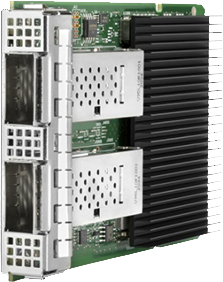The report presents the results of the certification process conducted on the Intel E810-CQDA2 100 Gbps Network Interface Card when used with Open-E JovianDSS software. Functional testing was carried out for both the Single node and High Availability Storage Cluster configurations together with performance measurements to ensure full compatibility.
Intel Ethernet Network Adapter E810-CQDA2 Details
When performing the certification process an Intel E810-CQDA2 for OCP3.0 Network Adapter was used. A detailed description of the adapter can be found in Table 1.
| Product name | Intel Ethernet Network Adapter E810-CQDA2 for OCP 3.0 |
| Data Rate Per Port | 100/50/25/10GbE |
| Port Configuration | Dual |
| Interface | PCIe 4.0 (16 GT/s) |
| Intel® Data Direct I/O Technology | Yes |
| RDMA | Yes |
| Intelligent Offloads | Yes |
Single Node & High Availability Cluster Performance Tests
In order to ensure the outstanding performance of the tested device while used with Open-E JovianDSS, we have performed functional testing for both the Single Node system and High Availability Cluster configurations. The following test was intended to ensure that the Intel E810 network interface card is fully utilized when used as the connection to the client machine. This way, we have verified the sustainability of Open-E JovianDSS and the tested device alliance.
Single Node Performance Excellence
Open-E JovianDSS was configured as a Single Node using the Intel E810 network adapter that was used as a single port connection on both the storage server and client machine. The chart no. 1 presents the sequential read performance results with a throughput of around 11 GB/s. Taking into account the overhead, this value is very close to the theoretical maximum data transfer rate of the tested device. As for the sequential write, a maximum throughput of only around 8 GB/s was achieved, due to the storage limitations. The aforementioned results suggest that the tested network adapter is fully utilized by Open-E JovianDSS only when used to access storage from the client side.
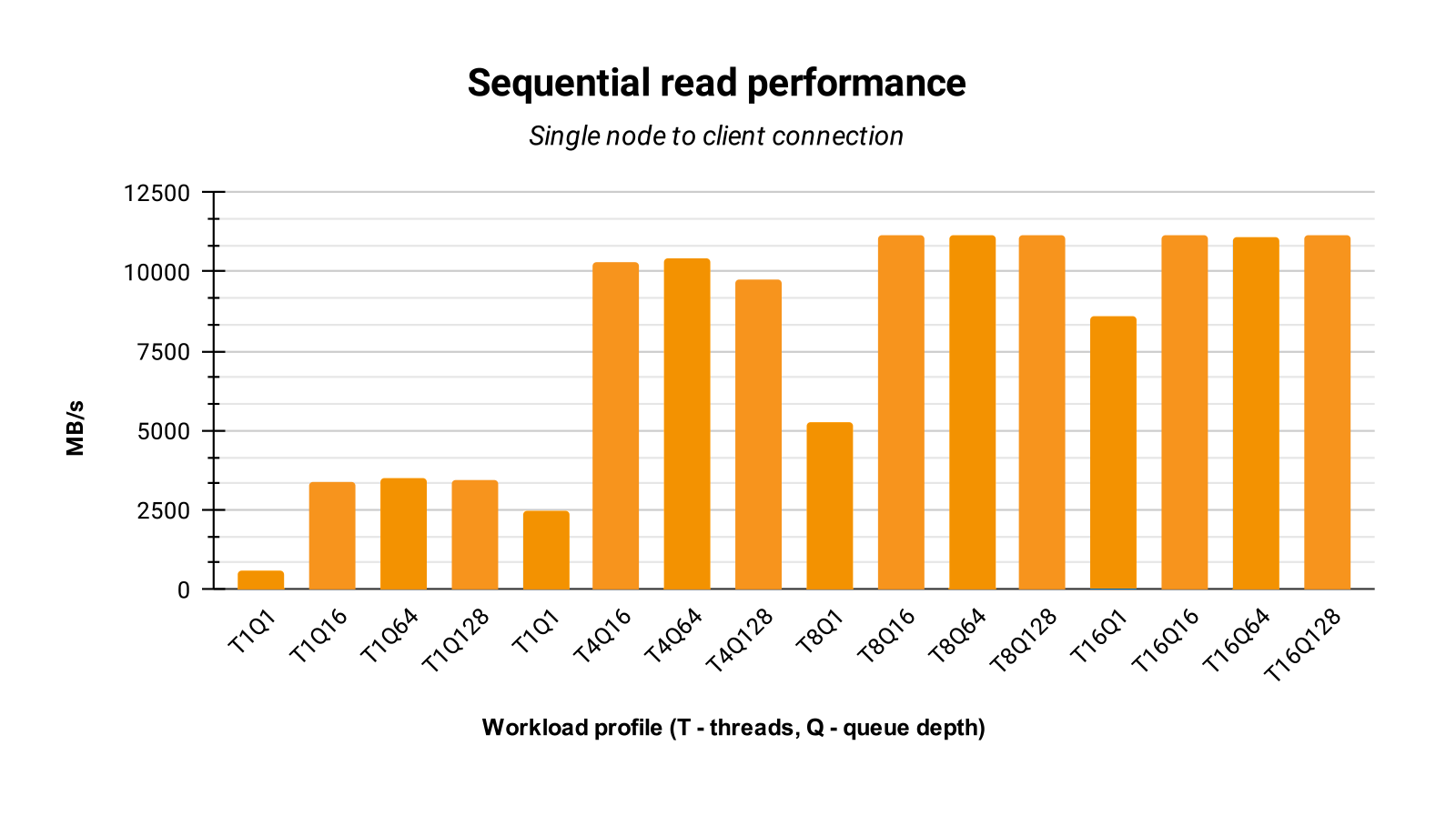
As for the sequential write performance presented on the chart no. 2, a maximum throughput of only around 8 GB/s was achieved, due to the storage limitations. The aforementioned results suggest that the tested network adapter is fully utilized by Open-E JovianDSS only when used to access storage from the client side.
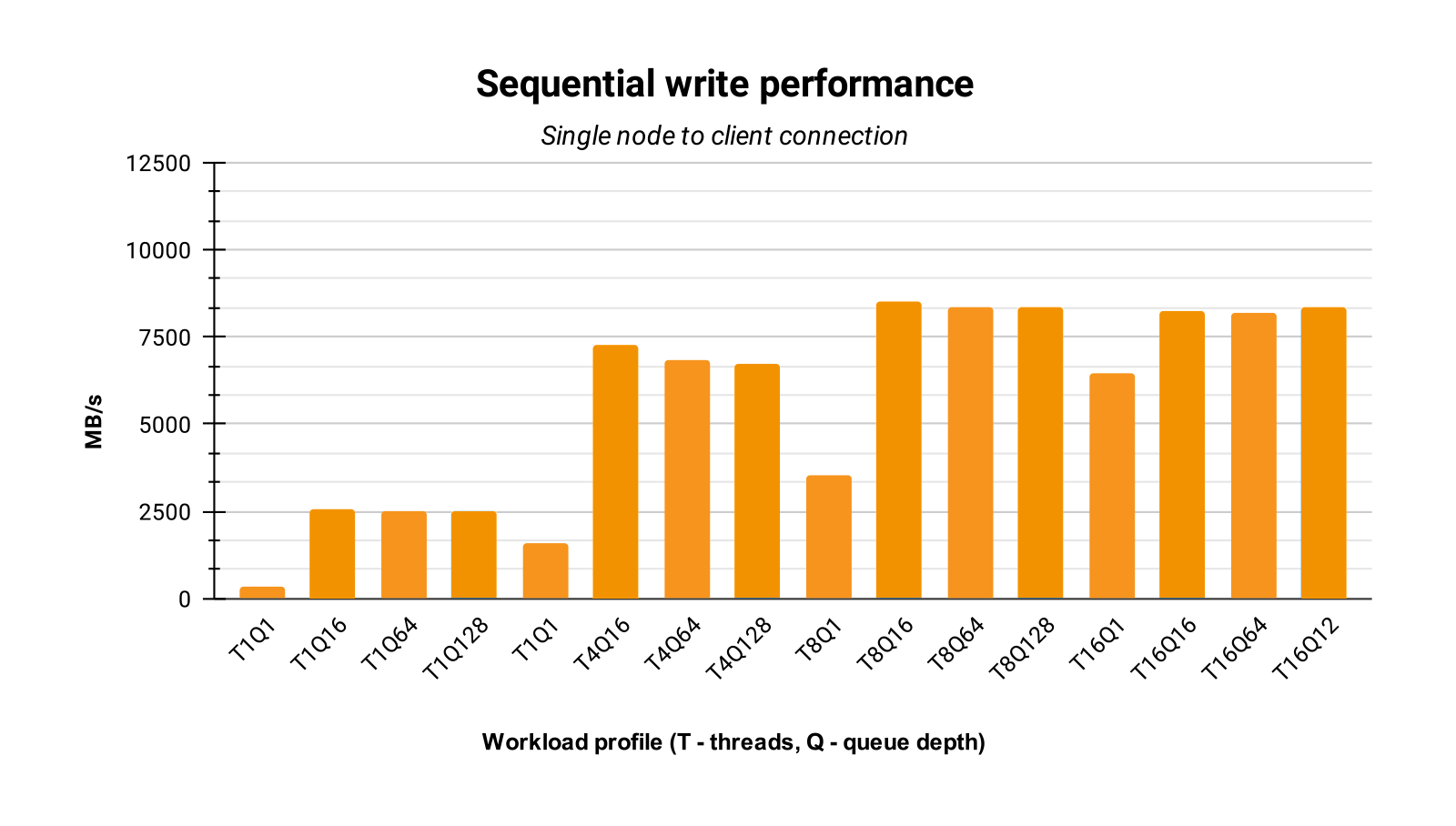
Enchanced High Availability Cluster Performance
The Open-E JovianDSS non-shared storage cluster was configured using two nodes, described in Table 4. The tested Intel E810 network adapter was used for a mirroring path with a single port connection. The locally run fio was able to generate a sequential write workload, presented on the chart no. 3, with a throughput of around 5 GB/s, which was close to the limit of the underlying storage.
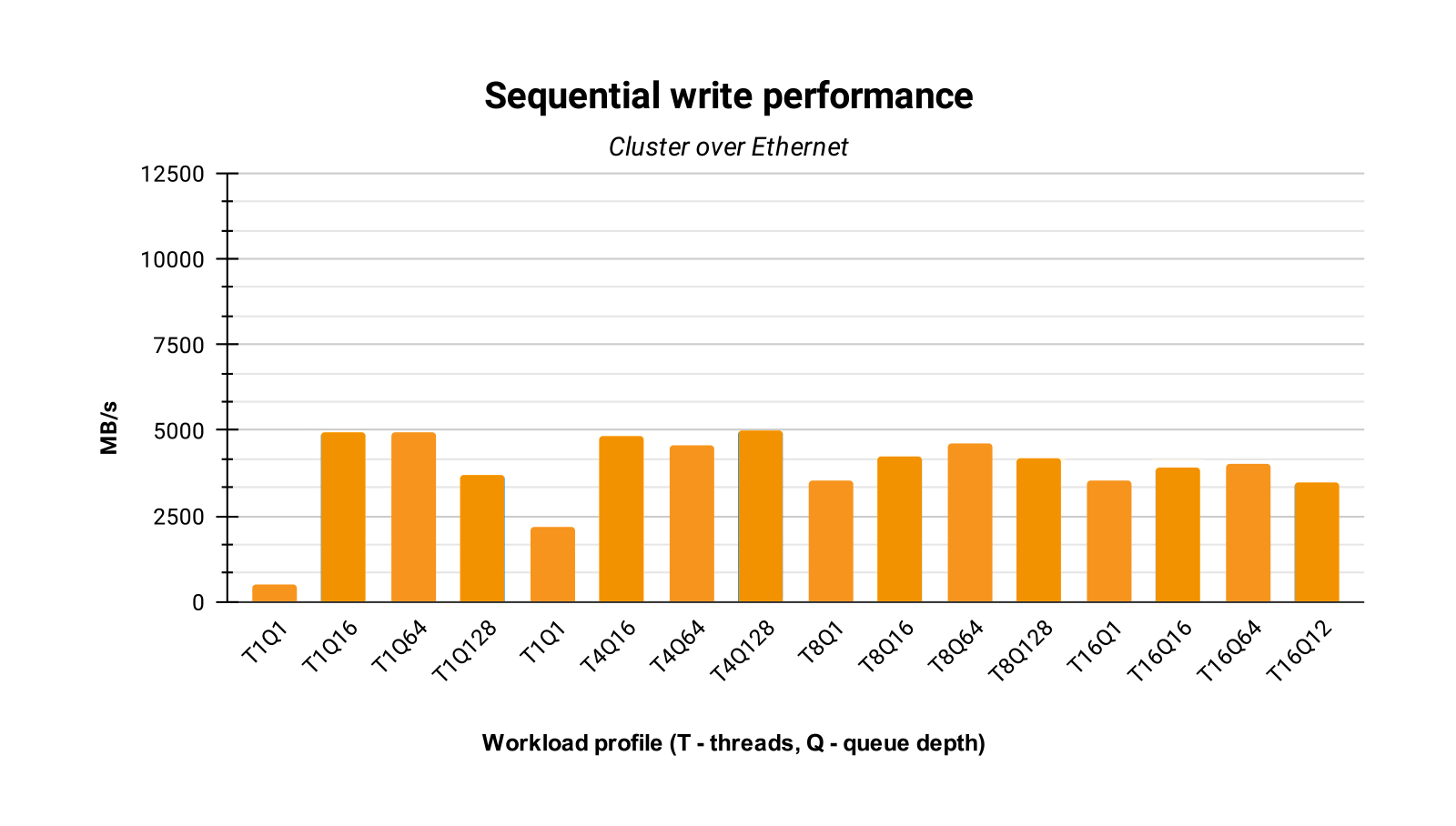
When a sequential read was performed, a maximum of 10 GB/s was achieved (see the chart no. 4). After accounting for the overhead, this is close to the maximum theoretical data transfer rate of the tested device. Both the write and read operation results confirm that the tested network adapter is fully utilized when used for mirroring path in an Open-E JovianDSS non-shared storage cluster.
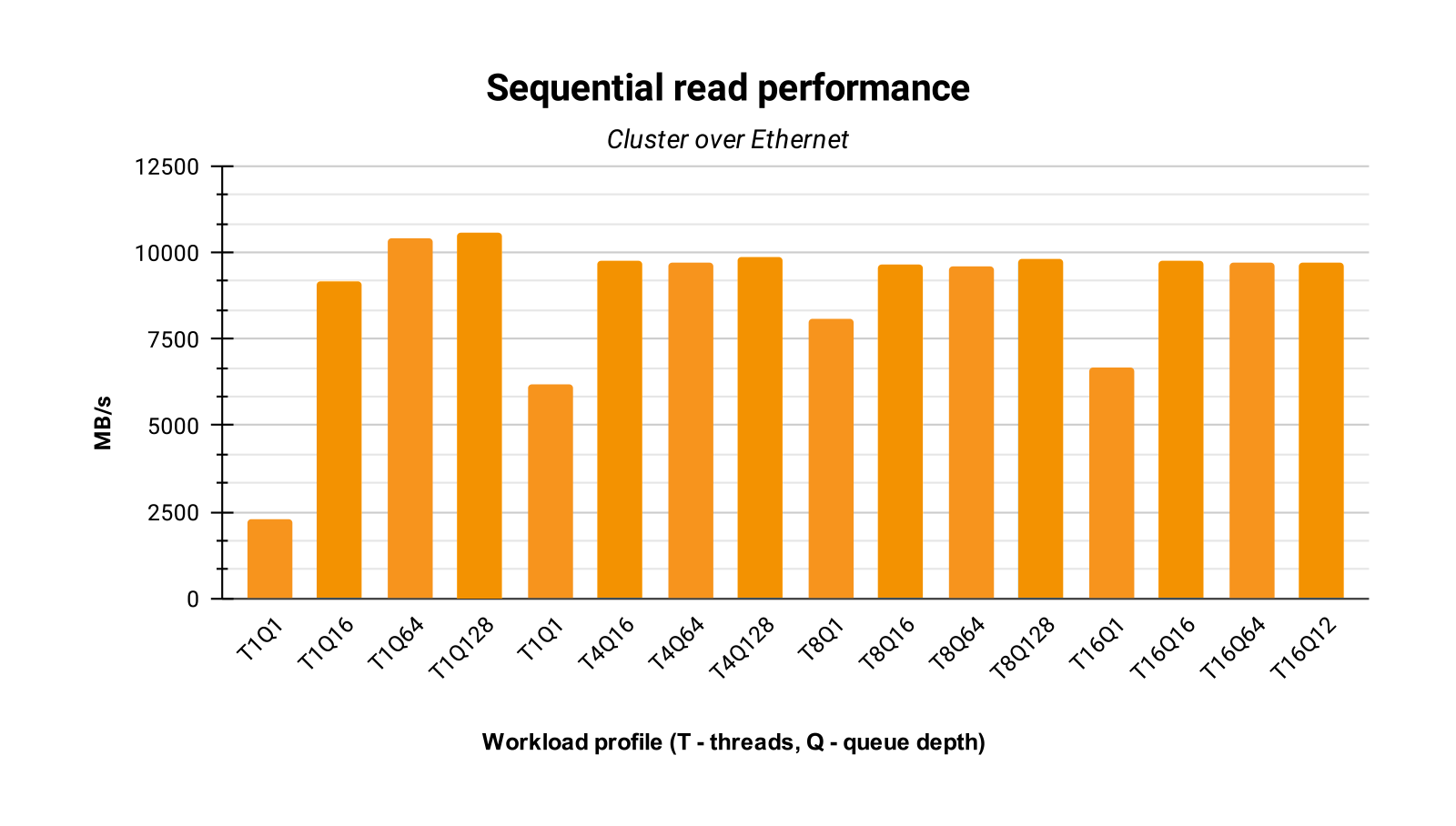
Test Environment
Hardware specifications of the environments used during the certification process are included in a table below. This applies to the Single node configuration as well as both the HIgh Availability Storage cluster.
| System name | Intel® Server System M5OCYP2UR208 |
| Motherboard | Intel M5OCTP25BSTD |
| CPU | 2x Intel® Xeon® Gold 6334 3.60GHz |
| RAM | 6x 16 GB 3200 MHz DDR4 |
| NIC | E810-CQDA2 for OCP3.0 |
| Storage devices | 6x Intel* DC P4510 2 TB (120 for Single node) |
| System | Open-E JovianDSS up29r1 Arch Linux-2021.11.01 (client side) |
| Test Tools | Performance measurements were done using fio for Linux, v3.28. |
Summary
The Intel E810-CQDA2 network adapter was comprehensively tested for full functional compatibility with Open-E JovianDSS. Performance characteristics were also tested in several use cases. Both Single node and HA cluster operations were taken into consideration. The tests were designed to find any abnormalities in the tested device. Given the results achieved in tesbnd the examined device can now safely be added to the Hardware Certification List and granted "Certified by Open-E" status.
About Intel
Founded in 1968, Intel is an industry leader that creates world-changing technology that enables global progress and enriches lives. Intel stands at the brink of several technology inflections—artificial intelligence (AI), 5G network transformation, and the rise of the intelligent edge—that together will shape the future of technology. Silicon and software drive these inflections, and Intel is at the heart of it all.
